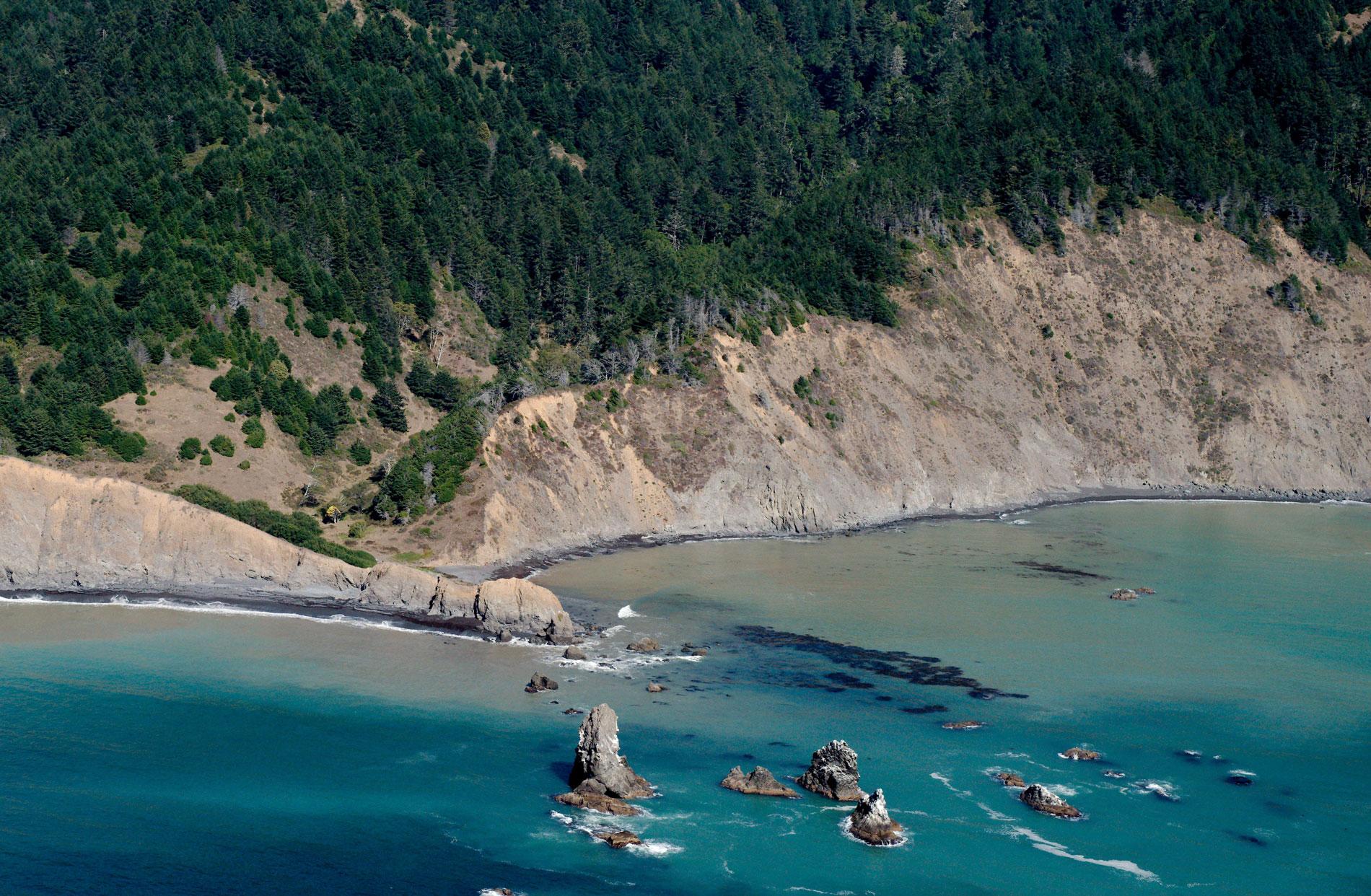Cluster Cone Rocks are at Bear Harbor, the site of a historical lumber wharf built over the rocky point that protects a small south-facing embayment with a sandy beach in Sinkyone Wilderness State Park on the Mendocino coast, about 21 miles (34 km) north-northwest of Westport and 12 miles (19 km) west-northwest of Leggett, California. Sinkyone is a wilderness area on the western flank of Jackass Ridge bordering the Pacific Ocean and the King Range National Conservation Area to the north. The lack of direct highway access has led to the Sinkyone Wilderness area being referred to as the Lost Coast. The area geology is represented by the Coastal Franciscan Belt that developed during the Eocene epoch and consists almost entirely of greywacke, shale, and conglomerates which have experienced low-grade metamorphism. There are also minor occurrences of chert, basalt, limestone, and serpentinite. Franciscan rocks are thought to have formed prior to the creation of the San Andreas Fault when an ancient deep ocean trench existed along the California continental margin.
The Sinkyone Wilderness is along the westernmost portion of the traditional territory of the Sinkyone people and is the longest stretch of permanently protected coastal wilderness in the contiguous states. The Sinkyone people speak a dialect of the Wailaki language belonging to the Pacific Coast Athabaskan tribes, and principally occupied the lands surrounding the lower south fork of the Eel River. The coastal redwood forests provided fertile hunting grounds and access to fish and game even during the winter months. The Sinkyone people inhabited up to 70 permanent villages and seasonal encampments throughout their territory. In 1849, the California Gold Rush introduced Euro-Americans to the vast coastal forests and the commercial harvest of old-growth redwoods and tanbark oak soon followed. Road networks were developed to access the timber to supply the lumber and tannery demands of San Francisco. In 1850, California became a state and was required to allow the federal government to conduct all formal relationships with tribal communities. Between 1851 and 1852, the U.S. Army forced tribes to sign treaties that relinquished their rights to traditional lands in exchange for reservations. Most of the Sinkyone people succumbed to introduced diseases and the survivors were relocated to the Round Valley and Hupa Reservations.
In 1882, a small wharf was built at Bear Harbor for the loading of forest products from the Lost Coast. In 1893, construction began on the Bear Harbor and Eel River Railroad over the coastal ridge to connect Bear Harbor to Indian Creek, a tributary of the South Fork Eel River. The first 2 miles (3 km) of railroad track were between the wharf and a steep incline that rose 600 feet (183 m) over a distance of 1900 feet (579 m) on Jackass Ridge. A gravity system was used with a loaded car going down the incline pulling an empty car up the incline. From the top of this slope, a railroad was built to Indian Creek with a terminus 10 miles (16 km) from the Bear Harbor wharf. An engine house, shops, and a warehouse were constructed at this point, and Lew Moody built a hotel and saloon nearby. Horses were used to move the rail cars between the wharf and the incline, and a steam locomotive was used between the incline and Moody’s. In 1903, Southern Humboldt Lumber Company built a sawmill on the South Fork Eel River, and the camp that grew around it was named Andersonia for company president Henry ‘Neff’ Anderson. In 1905, Anderson was killed in a construction accident as a railway extension from Moody to Andersonia was being completed. In 1921, the railroad and sawmill were dismantled and the steam locomotives were abandoned. Read more here and here. Explore more of Cluster Cone Rocks and Bear Harbor here:

